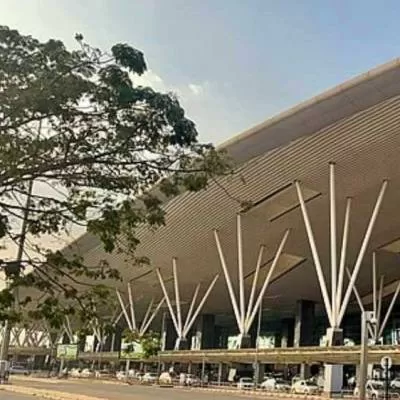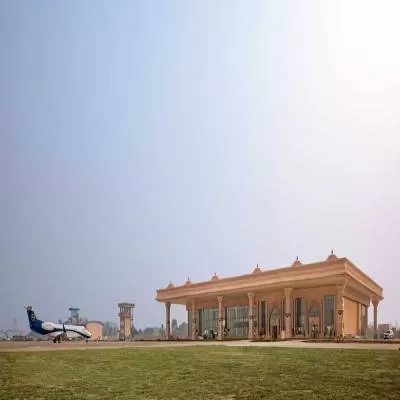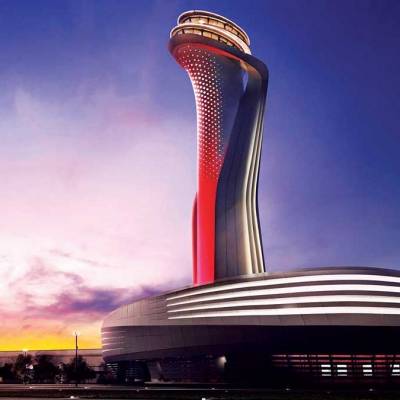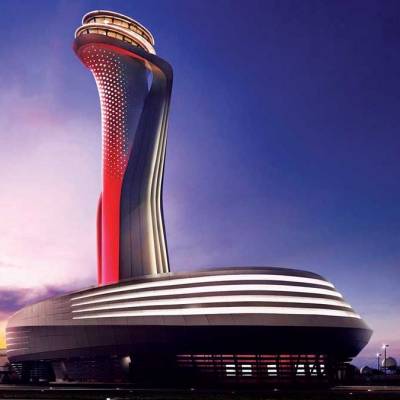- Home
- Infrastructure Transport
- AVIATION & AIRPORTS
- I have always maintained integrity and truthfulness - as an engineer or teacher

I have always maintained integrity and truthfulness - as an engineer or teacher
At the age of 63, Dr HM Raje, Director, Raje Structural Consultants, remains passionate about his work. And, as he shares with us, his journey has been as interesting as it has been remarkable. He began his career at the age of 24, in the area of soil engineering. Following his Master´s from Victorian Jubliee Technical Institute, Mumbai, he quit the soil consultancy job and got involved in the design of bridges. He was also a lecturer in VJTI in Civil Department. This was followed by a design-related job and then an appointment with the company, Toyo Engineering India. During one of his design works in Goa, he met a Saudi Arabian, who offered him a job in his country. Dr Raje then joined the Arabian Technical Engineering Company and worked on the King Khaled International Airport as project manager. After four years in Saudi Arabia, he decided to come back to India in 1985-86. On his return, he purchased some land in Vagholi estate in Pune, planned a bungalow scheme and decided to go into the construction field. The property went into litigation and he lost all his investment. Dr Raje then returned to academic, as principal for Engineering College affiliated to Mumbai University. In due course, he also wrote a book on engineering mechanics and completed his PhD from IIT-Mumbai. In 1996, he started his own consultancy. Soon after, the Bhuj earthquake occurred and he prepared extensive reports on the Earthquake failures for Court Committee. This was applauded by Hon´ble Atalji´s government.
Dr Raje has never looked back.
In conversation with CW, he shares some of his learnings:
Transformation in project execution: Construction has transformed heavily. Previously, in India, we used bamboo for scaffolding and timber or steel plates for shuttering. Today, we have aluminium shuttering, and various technologies that help in faster construction. Design technology has changed. A lot of different materials have come into the market. The grade of concrete, which previously was M15 or maximum M25, has gone up to M80 to M100. The grade of steel has also changed. While earlier, we had 15-21 days shuttering, now the demand is for a seven-day cycle. However, this transformation has brought along major challenges as well.
Construction technique: Speaking about an iconic project,
I was involved in the development of an international exhibition centre in Surat, with 90-m span roughly 300 ft without a column. What makes the project iconic is that it has 125,000 sq ft column-free space and the temperature is maintained air-cooled at 24o. While the structure was beautiful, the problem occurred from the soil. The soil report was given to us and they wanted band drains to be placed, which was difficult, time consuming and costly. As we were structural consultants and not soil consultants, we requested to be allowed to help with soil as well. We then decided to adopt a technology using geotextiles, and placed those geotextiles on soil and gravel material. The result: We could actually see the bearing capacity increased to 25 tonne per sq m on black cotton soil and lay foundations. This technology, was cost effective and fast against the band drains, the cost of which was Rs 3.5 crore and the time taken was more than 9-10 months only for foundation. So, with this technology, we completed the project within 10 months.
Innovative material: About 15-16 years ago, as part of my PhD research, I found that when a building is demolished, you get coarse and fine aggregate, which can be reused. Today, to bring down the carbon footprint, we need to start reusing the coarse and fine aggregates source from old buildings rather than dumping the material into the sea or using it in a landfill. Also, sand is not available, because of which a code is being released to mandate the use of coarse and fine aggregate (Crushed fine aggregate). His research 20 years back indicates that recycled aggregate can be used for structural elements. However, due to lack of expertise or doubts, it can be safely used for concrete roads or canal lining.
Non-destructive tests (NDT) for old, dilapidated structures: If a structure has to be considered a living being, non-destructive tests are akin to conducting various tests on human body; similarly, test can be conducted on the RCC structure. Columns are compared to legs as they carry the load of the entire structure and, like bones, have steel inside. This steel can be tested by using sophisticated equipment.
If floors need to be added in old structures, one can go up to the foundation, find out the size, reconstruct it and add the floors.
So, non-destructive testing becomes handy to evaluate the existing structure. It involves sophisticated instruments - ultrasonic pulse velocity, thickness gauge and radars etc. With GPS systems, we can locate the utilities in the earth along with location of depth. If a slab is vibrating, one can determine the reason and frequency of the vibration. We have been carrying out these tests in old structures in Mumbai. We analyse the load-carrying capacity to determine if it has reduced, ascertain the damages and plan repairs. But to execute this task, you have to be a professional. You need technical backup and must maintain transparency and authenticity. In our own laboratory, we conduct ultrasonic pulse test or hammer test before we carry out destructive test on concrete. This helps ensure calibration giving accurate results. But does everyone follow this? To diagnose a structure with authenticity, you need to understand which test should be carried out. Otherwise, conducting multiple tests can be misleading and you will not be able to offer the right solution. He analysed using above NDT to strengthen fire-affected Mantralaya in Mumbai.
Coming up next! As I am catching up in years, I want to develop my people. I also want to learn from the younger generation, which is talented and intelligent. I have always believed in learning from my own failures and that is what I deliver through my lectures as well. The motive is to make the younger generation realise that they could be witness to such failures too and need to be prepared in advance.- SHRIYAL SETHUMADHAVAN
To share your engineering experience with us, write in at feedback@ConstructionWorld.in
Dr HM Raje, Director, Raje Structural Consultants, shares insights into unique construction technologies and materials he has used in a career spanning close to four decades. At the age of 63, Dr HM Raje, Director, Raje Structural Consultants, remains passionate about his work. And, as he shares with us, his journey has been as interesting as it has been remarkable. He began his career at the age of 24, in the area of soil engineering. Following his Master´s from Victorian Jubliee Technical Institute, Mumbai, he quit the soil consultancy job and got involved in the design of bridges. He was also a lecturer in VJTI in Civil Department. This was followed by a design-related job and then an appointment with the company, Toyo Engineering India. During one of his design works in Goa, he met a Saudi Arabian, who offered him a job in his country. Dr Raje then joined the Arabian Technical Engineering Company and worked on the King Khaled International Airport as project manager. After four years in Saudi Arabia, he decided to come back to India in 1985-86. On his return, he purchased some land in Vagholi estate in Pune, planned a bungalow scheme and decided to go into the construction field. The property went into litigation and he lost all his investment. Dr Raje then returned to academic, as principal for Engineering College affiliated to Mumbai University. In due course, he also wrote a book on engineering mechanics and completed his PhD from IIT-Mumbai. In 1996, he started his own consultancy. Soon after, the Bhuj earthquake occurred and he prepared extensive reports on the Earthquake failures for Court Committee. This was applauded by Hon´ble Atalji´s government. Dr Raje has never looked back. In conversation with CW, he shares some of his learnings: Transformation in project execution: Construction has transformed heavily. Previously, in India, we used bamboo for scaffolding and timber or steel plates for shuttering. Today, we have aluminium shuttering, and various technologies that help in faster construction. Design technology has changed. A lot of different materials have come into the market. The grade of concrete, which previously was M15 or maximum M25, has gone up to M80 to M100. The grade of steel has also changed. While earlier, we had 15-21 days shuttering, now the demand is for a seven-day cycle. However, this transformation has brought along major challenges as well. Construction technique: Speaking about an iconic project, I was involved in the development of an international exhibition centre in Surat, with 90-m span roughly 300 ft without a column. What makes the project iconic is that it has 125,000 sq ft column-free space and the temperature is maintained air-cooled at 24o. While the structure was beautiful, the problem occurred from the soil. The soil report was given to us and they wanted band drains to be placed, which was difficult, time consuming and costly. As we were structural consultants and not soil consultants, we requested to be allowed to help with soil as well. We then decided to adopt a technology using geotextiles, and placed those geotextiles on soil and gravel material. The result: We could actually see the bearing capacity increased to 25 tonne per sq m on black cotton soil and lay foundations. This technology, was cost effective and fast against the band drains, the cost of which was Rs 3.5 crore and the time taken was more than 9-10 months only for foundation. So, with this technology, we completed the project within 10 months. Innovative material: About 15-16 years ago, as part of my PhD research, I found that when a building is demolished, you get coarse and fine aggregate, which can be reused. Today, to bring down the carbon footprint, we need to start reusing the coarse and fine aggregates source from old buildings rather than dumping the material into the sea or using it in a landfill. Also, sand is not available, because of which a code is being released to mandate the use of coarse and fine aggregate (Crushed fine aggregate). His research 20 years back indicates that recycled aggregate can be used for structural elements. However, due to lack of expertise or doubts, it can be safely used for concrete roads or canal lining. Non-destructive tests (NDT) for old, dilapidated structures: If a structure has to be considered a living being, non-destructive tests are akin to conducting various tests on human body; similarly, test can be conducted on the RCC structure. Columns are compared to legs as they carry the load of the entire structure and, like bones, have steel inside. This steel can be tested by using sophisticated equipment. If floors need to be added in old structures, one can go up to the foundation, find out the size, reconstruct it and add the floors. So, non-destructive testing becomes handy to evaluate the existing structure. It involves sophisticated instruments - ultrasonic pulse velocity, thickness gauge and radars etc. With GPS systems, we can locate the utilities in the earth along with location of depth. If a slab is vibrating, one can determine the reason and frequency of the vibration. We have been carrying out these tests in old structures in Mumbai. We analyse the load-carrying capacity to determine if it has reduced, ascertain the damages and plan repairs. But to execute this task, you have to be a professional. You need technical backup and must maintain transparency and authenticity. In our own laboratory, we conduct ultrasonic pulse test or hammer test before we carry out destructive test on concrete. This helps ensure calibration giving accurate results. But does everyone follow this? To diagnose a structure with authenticity, you need to understand which test should be carried out. Otherwise, conducting multiple tests can be misleading and you will not be able to offer the right solution. He analysed using above NDT to strengthen fire-affected Mantralaya in Mumbai. Coming up next! As I am catching up in years, I want to develop my people. I also want to learn from the younger generation, which is talented and intelligent. I have always believed in learning from my own failures and that is what I deliver through my lectures as well. The motive is to make the younger generation realise that they could be witness to such failures too and need to be prepared in advance. - SHRIYAL SETHUMADHAVAN To share your engineering experience with us, write in at feedback@ConstructionWorld.in




















